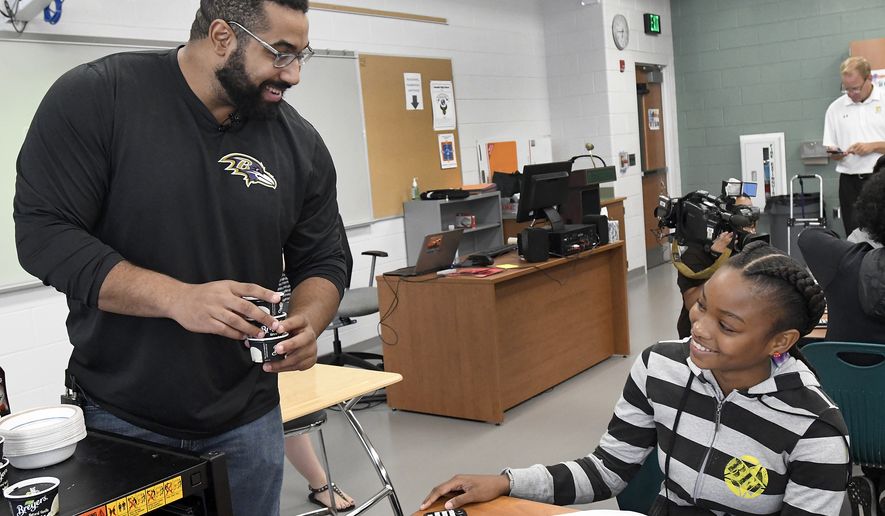OPINION:
The biggest beef NFL players had with the league about concussions — the heart of the concussion lawsuits against the NFL — was that the players were uninformed about the risks and damage.
Well, no one playing this game today can make that claim.
There is so much information available now about the risks and damage from playing football that it is almost too much to comprehend.
And, as NFL training camps opened last week, players were faced with a tsunami of studies and stories of the pain and suffering that, unless they get lucky and beat the odds, is the future that awaits them.
There was the big blow to the NFL: the study published in the medical journal JAMA that showed chronic traumatic encephalopathy — CTE — was found in 99 percent of deceased players’ brains that were donated for scientific research.
“There’s no question that there’s a problem in football. That people who play football are at risk for this disease,” said Dr. Ann McKee, director of Boston University’s CTE Center and coauthor of the new study. “And we urgently need to find answers for not just football players, but veterans and other individuals exposed to head trauma.”
AUDIO: Redskins quarterback Colt McCoy with Thom Loverro
The study is the largest of its kind and all of those studied were required to have football as their primary exposure to head trauma. The criteria for submitting a brain was based on exposure to repetitive head trauma, regardless of whether that individual exhibited symptoms during their lifetime. There is potential bias in the study, and there is no real estimate of the risk of playing football and the potential damage to the brain.
But those questions didn’t appear to be enough to dissuade John Urschel, a Baltimore Ravens guard, from announcing his retirement at the age of 26, two days after the CTE study results were released.
On the eve of his fourth NFL training camp, Urschel determined his brain — he is seeking a doctorate in math from M.I.T. — is far too valuable to gamble on.
Urschel did not come out and say his decision was tied to the results of the study. He wrote on Twitter that, “there is no big story here” and that his decision “was the right one for me.”
But no one retires as training camp opens, and the timing following the release of the study results was impossible to ignore. Both ESPN and the Baltimore Sun said, according to sources, Urschel’s retirement was a result of the study.
It is impossible to ignore all the stories and studies that appear to make playing football a recipe for a life of body and brain damage in old age — if you are fortunate enough to reach old age.
While Urschel called it quits — joining the ranks of young players retiring early — one of the league’s superstars, Ben Roethlisberger, spoke of his plans to retire because of fear of brain damage.
“I’ve been blessed to do this a long time,” Roethlisberger told the Pittsburgh Post-Gazette. “I think it’s just seeing my kids growing up, and in the offseason I love getting to spend time with them, and then I come here and football season just has to take up so much of your time. Even when you get home, I try my best to turn it off when I walk in the front door. I think I do a pretty good job of that, but it still consumes you in a way.
“Just all those things combined — being healthy, being able to play catch with my kids. I feel good mentally, I know this new study that came out that 90 percent of players’ brains who were studied had CTE.
“There’s a lot of scary things, and I think my wife would be OK if I hung it up, too. But I still love the guys, I still love the game, so it was right for me to come back and give it everything I have this year.”
I suspect the way Ben Roethlisberger has played this game, at the age of 35, the damage may be already done.
That’s what the widow of former NFL linebacker Wally Hilgenberg would tell Roethlisberger, or any NFL player — or youngster. Her husband died as a result of ALS, and after studying his donated brain, doctors determined that the disease was a result of years of playing football.
“The death that Wally had was horrendous,” Mary Hilgenberg told Associated Press. “By the time he died, he could only blink his eyes and he was defenseless against a fly. If a fly landed on him, he couldn’t move it. And this was all for the game of football.
“Now when I look at parents who just say ’it’s OK’ and they make excuses, I think they want to live in the glory that their sons play football. I think it’s really sad. It’s just very sad. And I hope that someday these boys don’t go back and say, ’Mom, Dad, you knew!’”
That’s the real bombshell coming — youth football. Dr. McKee, who part of this latest CTE study and is one of the country’s foremost experts on brain damage and sports, is also part of a study of the brains of children who played football. Those results are expected to be released this fall.
“I’ve looked at brains of young teenagers and seen damage that I’ve never seen before,” McKee said on a recent edition of HBO’s Real Sports. “And it came from football impact injuries. Took my breath away, I can’t believe it.”
Breathtaking. Life-taking. No one can say they were kept in the dark anymore.
• Thom Loverro hosts his weekly podcast “Cigars & Curveballs” Wednesdays available on iTunes, Google Play and the reVolver podcast network.
• Thom Loverro can be reached at tloverro@washingtontimes.com.




Please read our comment policy before commenting.